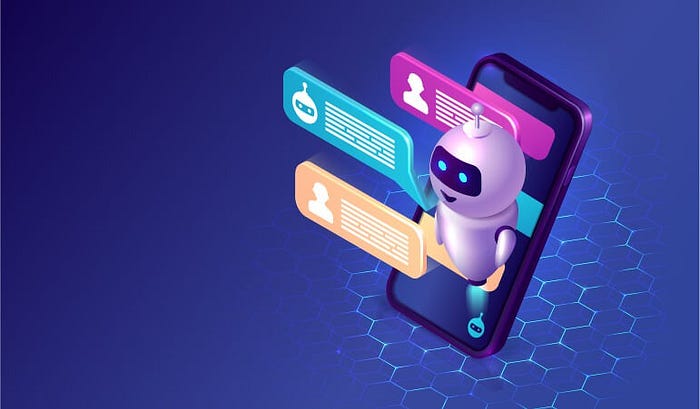- Published on
Building a Java Chatbot: A Step-by-Step Guide with Code Examples
- Authors
- Name

Introduction
Chatbots have become increasingly popular in recent years, allowing businesses to provide 24/7 customer support, automate tasks, and enhance user experiences. Java, with its versatility and robust ecosystem, is an excellent choice for developing chatbots. In this article, we will guide you through the process of building a chatbot using Java, step by step.
Prerequisites
Before we dive into building a chatbot, make sure you have the following prerequisites in place:
- Java Development Kit (JDK): Install the latest version of JDK on your machine.
- Integrated Development Environment (IDE): Use an IDE like Eclipse or IntelliJ IDEA for Java development.
- Maven or Gradle: Choose a build tool for managing dependencies.
- Bot Framework: We will use the Microsoft Bot Framework for creating the chatbot.
If you're looking to accelerate your chatbot development or ensure your project is built to the highest standards, consider partnering with professionals and hire Java developers.
Setting Up Your Java Chatbot Project
Step 1: Create a New Maven Project
Open your IDE and create a new Maven project. This will help you manage dependencies effectively.
Step 2: Add Dependencies
In your pom.xml file, add the following dependencies:
<dependencies>
<dependency>
<groupId>com.microsoft.bot.builder</groupId>
<artifactId>bot-builder</artifactId>
<version>4.11.0</version> <!-- Check for the latest version -->
</dependency>
<!-- Add other dependencies as needed -->
</dependencies>
These dependencies include the Microsoft Bot Builder SDK, which is essential for building chatbots.
Step 3: Create a Bot Class
Create a new Java class that will serve as your chatbot. Extend the ActivityHandler class from the Bot Framework and override its methods to handle incoming messages and events.
import com.microsoft.bot.builder.*;
import com.microsoft.bot.connector.authentication.AppCredentials;
import com.microsoft.bot.schema.Activity;
public class MyChatbot extends ActivityHandler {
@Override
protected CompletableFuture<Void> onMessageActivity(TurnContext turnContext) {
// Handle incoming messages here
return super.onMessageActivity(turnContext);
}
// Add other event handlers as needed
}
Step 4: Configure Your Bot
Create a configuration class to store your bot’s credentials and settings. You can use environment variables or a configuration file for this purpose.
public class BotConfiguration {
public static final String MICROSOFT_APP_ID = "YOUR_APP_ID";
public static final String MICROSOFT_APP_PASSWORD = "YOUR_APP_PASSWORD";
}
Step 5: Initialize Your Bot
In your Main class, initialize your bot using the configuration and start the bot service.
import com.microsoft.bot.builder.*;
import com.microsoft.bot.connector.authentication.MicrosoftAppCredentials;
public class Main {
public static void main(String[] args) {
BotConfiguration botConfig = new BotConfiguration();
BotFrameworkAdapter adapter = new BotFrameworkAdapter()
.use(new AuthenticationBotMiddleware(botConfig));
MyChatbot bot = new MyChatbot();
adapter.processActivity( /* Handle incoming HTTP requests here */ );
}
}
Handling Messages and Events
Now that your chatbot is set up, you can start handling messages and events. Use the onMessageActivity method in your MyChatbot class to process incoming messages. You can extract user input, perform actions, and generate responses here.
@Override
protected CompletableFuture<Void> onMessageActivity(TurnContext turnContext) {
String userMessage = turnContext.getActivity().getText();
// Process userMessage and generate a response
Activity reply = MessageFactory.text("Hello, you said: " + userMessage);
turnContext.sendActivity(reply);
return super.onMessageActivity(turnContext);
}
FAQ Section
Q1: Can I build a chatbot for different messaging platforms?
Yes, you can build chatbots that work on various messaging platforms like Microsoft Teams, Facebook Messenger, and Slack using the Microsoft Bot Framework.
Q2: How can I add natural language understanding to my chatbot?
You can integrate services like Microsoft LUIS (Language Understanding) to add natural language understanding capabilities to your chatbot.
Q3: Is it possible to deploy my chatbot to the cloud?
Yes, you can deploy your Java chatbot to cloud platforms like Azure for scalability and accessibility.
Conclusion
Building a chatbot with Java is a rewarding endeavor, enabling you to create interactive and engaging experiences for your users. With the Microsoft Bot Framework and the Java programming language, you have a powerful combination to develop feature-rich chatbots that can enhance customer support and automate tasks in various domains. Start building your chatbot today and explore the endless possibilities of conversational AI in Java.
